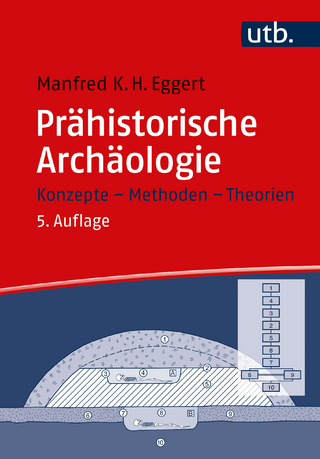
Profiling Death. Neo-Elamite Mortuary Practices, Afterlife Beliefs, and Entanglements with Ancestors
Brill (Verlag)
978-90-04-38810-9 (ISBN)
Recent scholarship has begun to unveil the culturally rich and dynamic landscape of southwest Iran during the first half of the first millennium BCE (aka the Neo-Elamite period) and its significance as the incubation ground for the Persian Empire. In Profiling Death. Neo-Elamite Mortuary Practices, Afterlife Beliefs, and Entanglements with Ancestors, Yasmina Wicks continues the investigation of this critical epoch from the perspective of the mortuary record, bringing forth fascinating clues as to the ritual practices, beliefs, social structures and individual identities of Elam’s lowland and highland inhabitants. Enmeshed with its neighbours, yet in many ways culturally distinct, Elam receives its due treatment here as a core component of the ancient Near East.
“This is an important contribution to the study of Neo-Elamite culture.”
-Lester L. Grabbe, Journal for the Study of the Old Testament 44.5 (2020)
Yasmina Wicks, PhD (2017), is a researcher at the University of Sydney. She has authored a monograph on 8th-6th Century BCE Babylonian, Assyrian and Elamite Bronze ‘Bathtub’ Coffins (Archaeopress, 2015) and several articles on first millennium Elam.
Preface and Acknowledgements
List of Plates
List of Tables
Abbreviations
Alas, Short is the Joy of Life! Why Study Elamite Mortuary Practices?
Part 1: The Backdrop: Elam in the First Millennium
1 Neo-Elamite Geography, Chronology, History, and the Textual and Iconographic Evidence Used in this Book
1.1 Geography
1.2 Chronology
1.3 Textual Evidence 1
1.4 Iconographic Evidence
1.5 Historical Overview
Part 2: The Mortuary Evidence
2 b>The Burial Evidence
2.1 Lowlands
2.1.1 Susa
2.1.1.1Apadana
2.2 Foothills
2.2.1 Karkhai
2.2.2 Kalantar
2.2.3 Tall-E Gazir
2.2.4 Jubaji
2.2.5 Arjan
2.3 Highlands
2.3.1 Lama
2.3.2 Malyan
3 Burial Location, Typology, Orientation and Body Arrangement
3.1 Location
3.2 Typology
3.2.1 Pit
3.2.2 Amphorae-Lined Pit
3.2.3 Brick
3.2.4 Single Pot
3.2.5 Double Pot
3.2.6 Jar
3.2.7 Mudbrick Vaulted Tomb
3.2.8 Stone-lined, Gabled-Roof Tomb
3.2.9 Stone-Lined, Slab-Roofed Tomb
3.2.10 Bronze “Bathtub” Coffin in a Stone-Built Tomb
3.2.11 Geographical and Chronological Notes on Typology
3.3 Orientation
3.4 Body Arrangement
4 The Assemblages
4.1 The Skeleton
4.2 Costume
4.2.1 Clothing
4.2.1.1 Textiles and Textile Decoration
4.2.1.2 Garment Fasteners: Belts and Pins
4.2.1.3 Visualising Neo-Elamite Clothing
4.2.2 Jewellery
4.2.2.1 Jewellery in Neo-Elamite Funerary Contexts
4.2.2.2 Non-funerary Evidence for Jewellery
4.2.2.3 A Word on the Special Value of Eyestones
4.2.3 Seals
4.2.4 Grooming Utensils and Finishing Touches
4.2.5 Weapons
4.2.6 Ceremonial(?) “Rings”
4.3 Grave Goods: Equipping the Dead
4.3.1 Vessels, Implements and Food Offerings
4.3.1.1 Vessel Categories
4.3.1.2 Vessel Assemblages: Types and Distribution
4.3.1.3 Vessels as Evidence for Ritual in Graves
4.3.1.4 The Menu of the Dead: Food Remains in Graves
4.3.2 Fire Ritual Utensils
4.3.2.1 Lamps
4.3.2.2 Candelabra
4.3.3 Human Representations
Part 3: Neo-Elamite Social Identities: Portraits in Graves
5 Social Identity in the Mortuary Record
5.1 Economic Status
5.2 Gender
5.2.1 Elamite Women in Life
5.2.2 Construction of Female Identity in the Neo-Elamite Mortuary Record
5.2.3 Construction of Male Identity in the Neo-Elamite Mortuary Record
5.2.4 Neither Male nor Female? Transcending the Male/Female Dichotomy
5.2.5 Non-Costume Grave Goods
5.2.6 Further Comments
5.3 Childhood
5.4 Individual and Family Identity: Naming the Dead?
5.5 Occupational Identity
5.6 Ceremonial Status and Notes on Two “Princesses” and a “Princely” Grave
Part 4: Combining Archaeology and Text: Death, Afterlife and the Neo-Elamite Funeral
6“Alas, Short is the Joy of Life”: Death and the Afterlife through an Elamite Lens
6.1 Down to the House of Darkness: The Realm of the Dead
6.2 Close Encounters with the Netherworld Powers that Be
6.3 A Weighing and Judgement
6.4 When I am Dead You Will Make the kispu for Me
6.5 Temple Institutions and Funerary Cult?
7 Imagining the Neo-Elamite Funeral from Archaeology and Texts
7.1 A Ceremonial Farewell in the Lowlands and Foothills
7.1.1 Choosing a Location
7.1.2 Preparation of a Burial Site and Burial Container
7.1.3 Preparation of the Body
7.1.4 Dressing up the Dead
7.1.5 A Funeral Banquet
7.1.6 A Burial Ceremony
7.1.7 Mourning
7.1.8 Keeping up Relations
7.2 A Highland Funeral
Concluding Note: The Neo-Elamite Period at the Juncture of Old and New
Bibliography
Appendix 1: Table of Neo-Elamite Burials
List of Plates
Index
| Erscheinungsdatum | 19.07.2019 |
|---|---|
| Reihe/Serie | Culture and History of the Ancient Near East ; 98 |
| Verlagsort | Leiden |
| Sprache | englisch |
| Maße | 155 x 235 mm |
| Gewicht | 744 g |
| Themenwelt | Geisteswissenschaften ► Archäologie |
| Geschichte ► Allgemeine Geschichte ► Vor- und Frühgeschichte | |
| Medizin / Pharmazie ► Pflege ► Palliativpflege / Sterbebegleitung | |
| ISBN-10 | 90-04-38810-9 / 9004388109 |
| ISBN-13 | 978-90-04-38810-9 / 9789004388109 |
| Zustand | Neuware |
| Haben Sie eine Frage zum Produkt? |
aus dem Bereich


